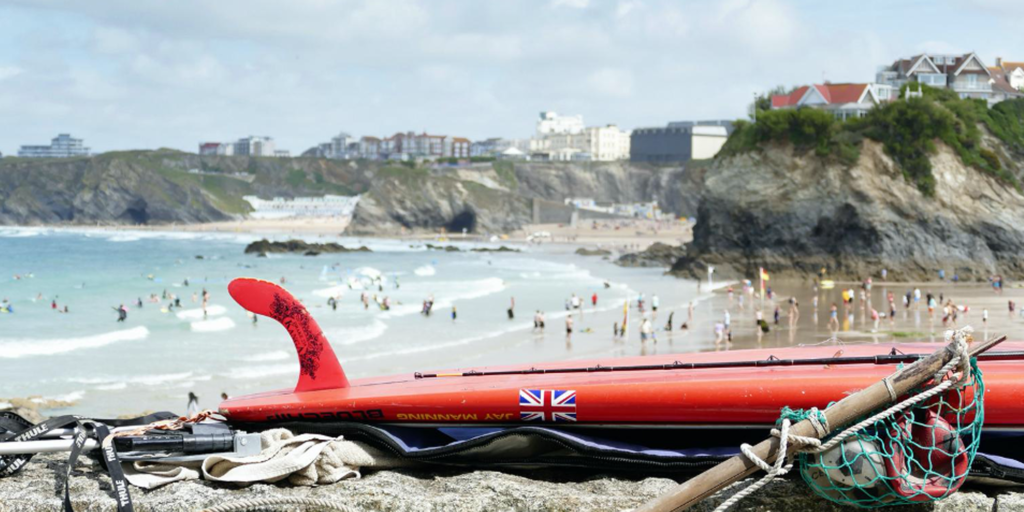

A local’s guide to Newquay
Little known facts about Cornwall’s best-known coastal town
The once small fishing village of Newquay has grown into a major tourism hotspot that, according to some sources, saw over one million visitors last summer. Tourists flock to this beautiful Cornish seaside town to enjoy breathtaking cliff-top views, picturesque beaches, and delicious fresh seafood.
While Newquay is famous for its surfing and partying, there’s a lot more to discover than bars and beaches! Here are some interesting facts you may not know about the Newquay coast.
1. Newquay Harbour
Historical records show that Newquay had its first settlers in the Iron Age. It was a fortified cliff village that later became a port town before transforming into the popular tourist destination that we know today. The town was known by its Cornish name, ‘Towan Blystra’, until the 15th century. In 1439, a harbour was constructed. Known by locals as ‘New Quay’, it was this development that gave Newquay its modern name. Today, the harbour is one of Newquay’s most picturesque locations and is a popular spot with tourists and locals. There are plenty of great seafood restaurants overlooking the harbour and a small beach where visitors can swim and relax.
2. The Barrowfields
The Barrowfields is an archaeological site approximately 400 meters from Trevelgue where visitors can see prehistoric burial mounds. There were once up to 15 barrows at the site, but only a few remain now. The site was recognised as a cemetery by Historic England in the 1960s and was listed as a scheduled monument. Archaeologists excavated several interesting artefacts from the site, including cooking pots and a pottery burial earn that are believed to have been buried there up to 3,5000 years ago!
3. Trenance Cottages
The Trenance Cottages can be found in the heart of the Trenance Gardens, an Edwardian public park located in the centre of Newquay. This collection of Grade II listed houses dates back to the 18th century and has a fascinating history. Previous owners of the cottages include the Arundells of Trerice and the coxswain of the Newquay lifeboat. The site was recently renovated and has become one of the most peaceful and beautiful spots in all of Newquay. Renovations were carried out by local volunteers and supported by various charities and organisations, including the Heritage Lottery Fund, the Cornwall Council, and the Pilgrim Trust.
4. Huer’s House (The Huer’s Hut)
The Huer’s Hut is in a great position on Towan Head overlooking the picturesque beaches of Newquay. The circular structure dates to the 14th century when it was used as a lighthouse and hermitage. By the 16th century, the building was used to locate pilchards (sardines) that entered the Newquay bay in mid-July. The lookout (known as the huer) would inform the fishermen once the pilchards appeared and direct them to the fish. This listed building played a crucial role in the existence of Newquay, as the town was built on the fishing industry. A large restoration project took place in 2014 to repair weather damage to the building and ongoing maintenance has been planned to maintain the structure.
5. Smugglers and Wreckers Sea Caves
Many people enjoy exploring Newquay’s history from the sea and there are plenty of caves you can visit to learn about pirates, smugglers, and shipwrecks. Smuggling was extremely common in southern England during the 17th and 18th centuries and smugglers started bringing illegal items into Newquay harbour. This included valuable items like tobacco, silk, and alcohol. Wrecking was another key part of the smuggling trade in Cornwall. ‘Wreckers’ would take goods that were washed ashore from ships that were run aground close to shore. They would create fake lighthouse beacons or use other methods to trick ships into dangerous coastal areas. Once the ships were destroyed, the wreckers would take the cargo and sell it for profit. According to Historic UK: “The law in those days deemed it illegal to claim salvage from a wrecked ship if anyone was alive on it.”
People have flocked to seaside towns since the 18th century and to this day, the coastal regions remain dear to the British. Newquay is one of the most popular holiday destinations in the UK, and for good reason! The coast has a rich history, and the area is full of hidden gems just waiting to be explored. The area is also known for its stunning beaches and panoramic cliff-top views. Add these to the peaceful nature of Cornwall, as well as the opportunities it presents exploration and watersports, and it becomes the perfect destination for holidaymakers of all ages.



